
- Vintage Signs
- Brand
- Budweiser (24)
- Chevrolet (33)
- Coca Cola (41)
- Coca-cola (44)
- Esso (14)
- Esso Gasoline (45)
- Ford (17)
- Gulf (20)
- Hamm's (69)
- Indian Motorcycles (21)
- John Deere (14)
- Mobil (21)
- Mobil Gasoline (43)
- Nintendo (44)
- Oil (18)
- Omega (25)
- Shell Gasoline (34)
- Sinclair (21)
- Sinclair Gasoline (44)
- Texaco (60)
- ... (5021)
- Date Of Origin
- Make
- Signed
- Size
- Theme
Vintage 2 Sterling Silver Signed Wallace Clam Shell Dish Nut Trinket 4020 Soap
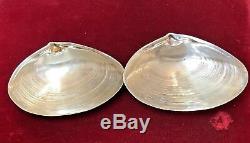
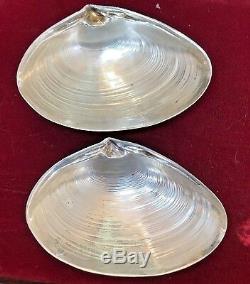
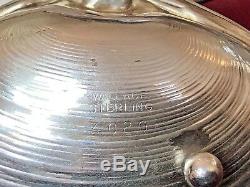
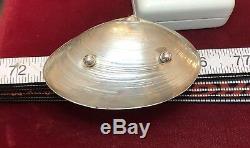
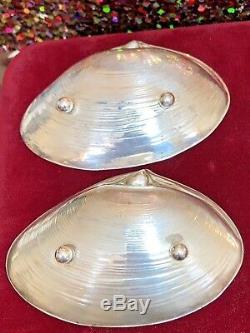
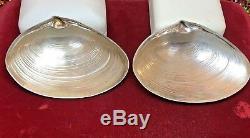

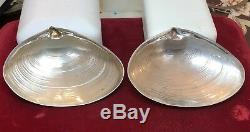
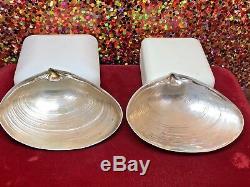
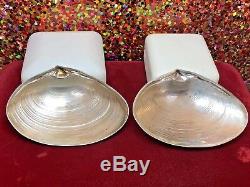
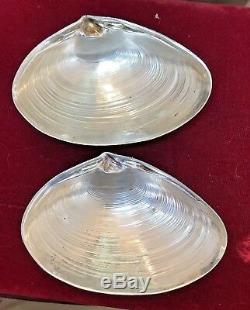
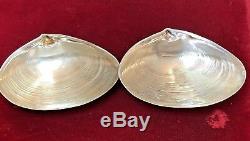


Company History: The founder of Wallace Silversmiths, Robert Wallace was born in Prospect, Connecticut on November 13, 1815. At the age of 16, Robert Wallace became an apprentice to Captain William Mix, a renowned spoon maker for the Meriden Britannia Co. A Meriden Britannia apprenticeship was highly sought after because the firm was the most successful cutlery and hollowware-producing firm in the Northeast. By 1833, Wallaces silver shop was up and running. As Wallace was skilled in the art of spoon making, Wallaces only product was spoons.
Robert Wallace died on June 1, 1892, and the sons and son-in-law continued the business. At the start of the 20th century, about 3 tons of steel and 1.5 tons of nickel silver were used daily. The companys success brought prosperity to Wallingford. The 1930s were spent perfecting R.
Following the companys aggressive expansion, it released a series of cutlery patterns, created by designer William S. Warren - called the Third Dimension Beauty collection - that would prove to be its most popular. Rose Point (1934), Sir Christopher (1936), Stradivari (1937), Grande Baroque (1941), Grand Colonial (1942), and Romance of the Sea (1950) combine timeless elegance with the quality craft for which Wallace is known. These patterns are called "Three Dimension" because the design of these patterns, are apparent from the front, back, or profile. Each of these patterns remains popular. In 1947, the designer wrote a book - and it was published by Wallace Silversmiths - called "Wallace Beauty Moods in Silver" to discuss five of the six "Three Dimension" designs.It was with the introduction of the now famous Grande Baroque pattern in 1941, that Wallace truly established itself as a prominent name in the silver industry. Sales of this magnificent three-dimensional pattern exceeded even the most ambitious projections and Wallace was soon growing through acquisition at a remarkable clip. After the companys relocation, its name became Wallace Silversmiths. As a result of this impressive growth, the renowned Hamilton Watch Company of Lancaster, Penn. Acquired Wallace Silversmiths in 1959.
Over the next three decades, the ownership of Wallace Silversmiths would change three more times. The item "VINTAGE 2 STERLING SILVER SIGNED WALLACE CLAM SHELL DISH NUT TRINKET 4020 SOAP" is in sale since Sunday, February 17, 2019.
This item is in the category "Antiques\Silver\Sterling Silver (. The seller is "4744366" and is located in Andover, Massachusetts. This item can be shipped worldwide.- Object Type: Dish
- Modified Item: No
- Country/Region of Manufacture: United States
- Brand: Wallace
- Age: 1900-1940

